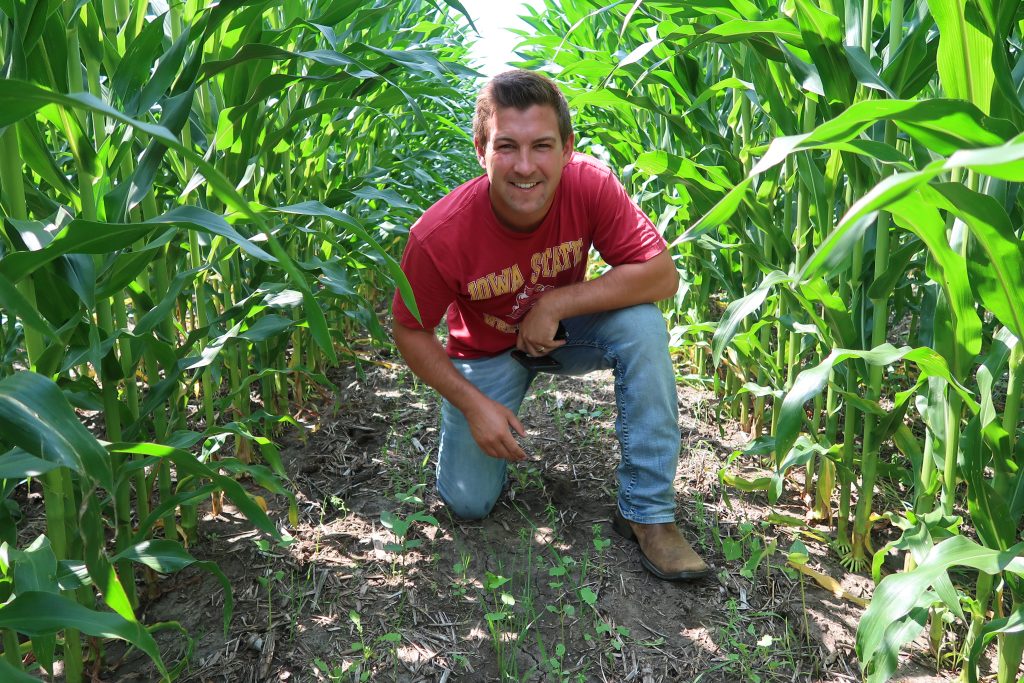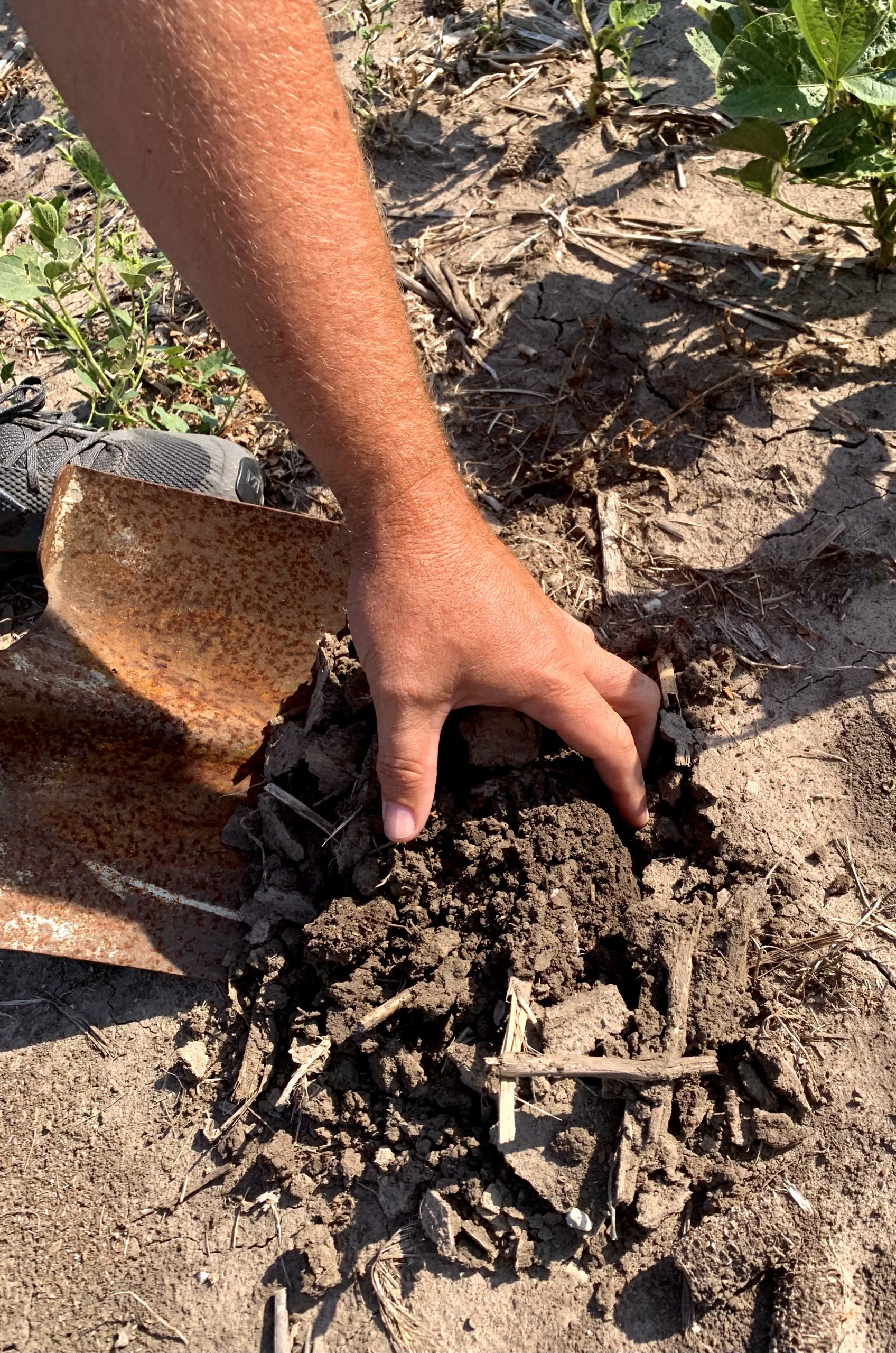Remedies are out there, with incentives, to make better soil and trap carbon while preserving wildlife and other natural resources.
A fortune in private and public dollars is being spent on improvements to food production. Curbing climate change is a golden byproduct.
Projects with $10.2 million in grants from the National Fish and Wildlife Foundation—$15.1 million total with $4.9 million in matching contributions—“will improve management and conservation on more than a cumulative 330,000 acres of farmland and ranchland across the United States (14 states),” according to a June 12 news release from the foundation.
With financial assistance from Archer Daniels Midland, the Kansas Association of Conservation Districts is boosting soil health.
Link to pizza
ADM is also working with Nestlé U.S. to help bring regenerative agriculture practices to wheat farms within its DiGiorno pizza brand supply chain, by gifting wheat farmers financial support, technical resources and assistance, according to the company website.
In an online story from Nestlé released in July 2023, the DiGiorno division endeavored to bring regenerative practices to nearly 99,000 acres of farmland—the size of nearly 53,000 football fields, nearly double the amount of land needed to grow the necessary wheat in its DiGiorno pizzas. Through partnerships with ADM and Ardent Mills, two DiGiorno suppliers, the investments would benefit wheat farms across Kansas, North Dakota, Indiana and Missouri.
“The work will help the company accelerate the transition to regenerative agriculture in (DiGiorno’s) supply chains,” the story reads.
Pay for practices
Meanwhile, efforts by Mitchell Hora, an Iowa farmer who formed Continuum Ag in 2015, are aiming to help farmers get paid for keeping carbon in their soil.

The target is a low, neutral or negative carbon intensity score, which is calculated by the GREET model. It uses all sorts of measurements, such as management practices, fertilizer used (including manure), diesel fuel usage, crop yield and more to determine a farm’s impact on the environment, he said.
“Farmers implementing practices that build soil health, in almost every case, results in a low CI score,” Hora said.
His Iowa farm boasts a CI score of negative 4.1. A zero score is “carbon neutral.”
An emerging application provides for compensation through 45Z tax credits, part of the 2022 Inflation Reduction Act. The program begins Jan.1, 2025.
“We’ve scored more than 300 million bushels of corn since December, about 1.6 million acres. Thousands of farmers are trying to get prepared for these opportunities,” Hora said. “They can earn tax credits and lower their tax liability dollar for dollar, or they can sell them.”
This is the first time that the Internal Revenue Service will use on-farm reduction as part of the overall decarbonization strategy, he said.
“Now, 45Z is part of the equation,” Hora said.
Resources available
The Kansas Association of Conservation Districts is involved in the planting of cover crops, said Troy Munsch, a KACD contractor.
“What we’re looking at through this agreement is to improve soil health. That’s our focus,” he said. “We are advocating to have more living roots in the system for a longer period of time.”
Goals include improving infiltration and organic matter in the soil.
“It just increases microbial activity, gives more food to the soil when microbes are working,” said Munsch, of Salina, Kansas, who worked 33 years for the Natural Resources Conservation Service.
Trained as an agronomist, Munsch completed his college degree from Fort Hays State University. He grew up on a farm in northwest Kansas.
Grazing is an important part of cover crops, Munsch said, utilizing livestock manure and urine and disturbing the soil surface from cattle walking on it.
“We want to make sure we don’t graze the cover crop to the ground,” he said. “We want 60% to 70% ground cover out there. It armors the soil. The growing plant and surface residue keep the soil temperature down a little bit, and it also helps when it rains. It’s not sealing soils off when you have residue on top.”
Cover crops also help with weed suppression, Munsch said, and technology changes have contributed as well, such as changing to stripper headers on combines, leaving more standing stubble in the field.
“It helps with wind and water erosion and gets some shade on the ground,” he said. “Keeping soil temperature lower on the surface is a key deal. That way you have better microbial activity in the top couple of inches.”
Partnership valuable
Munsch lauded the partnership with ADM, which is “willing to provide financial assistance for regenerative ag practices.”
By taking education to the producers, he said, more of them are adopting change.
“Every producer has his own system. These are voluntary programs. Nothing’s mandated,” Munsch said.
KACD’s “three-legged stool” involves peer-to-peer networking in small group discussions to hash over soil health topics, seeking information from the Kansas Soil Health Alliance, the NRCS management units that are already established, and the opportunity to take part in cost-share initiatives to mitigate some of the risk.
“KACD feels the education portion is just as important as financial assistance,” Munsch said. “When a farmer or rancher hears it from one of their peers, it has a bigger impact. It’s critical.”
Given that the Kansas Soil Health Alliance has only been “public facing” for a few years, Jennifer Simmelink, the nonprofit’s coordinator, can’t speak to trends.
But awareness is growing, based on what she sees at field days, workshops and other events.
“Attendance is pretty consistent, driven by what is going on in field operations. It’s not so much the number of people who show up. It’s the quality of conversations and the connections they make,” Simmelink said. “The amount of information about soil health and soil health practices is just growing immensely.”
These days, growers are also absorbing education through YouTube, webinars and other avenues.
“We’re not lacking for opportunities to get out and interact with Kansas farmers,” she said. “The reception we receive gives me the indication that there’s a lot of interest in soil health.”
FACTOID: The $10.2 million in grants from the National Fish and Wildlife Foundation, with $4.9 million in matching money, were awarded through the Conservation Partners Program, a partnership between NFWF, the USDA Natural Resources Conservation Service, U.S. Environmental Protection Agency, U.S. Fish and Wildlife Service, the Great Lakes Restoration Initiative, Cargill, The J.M. Smucker Co., Nestlé and additional support from a collaboration among General Mills, Walmart and Sam’s Club.
“Funded projects will address resource concerns in the Great Lakes Basin, Prairie Pothole Region, Southern Great Plains and Upper Mississippi River Basin by providing technical assistance to implement a range of conservation practices such as cover crops, conservation tillage, on-farm wetland enhancement, irrigation improvement, grazing management and prescribed burning,” according to the June 12 NFWF release.
Tim Unruh can be reached at [email protected].
FACTOID: GREET is an acronym that stands for Greenhouse Gases, Regulated Emissions and Energy Use in Transportation model.
It’s a tool that (among other things) “can calculate total energy consumption (non-renewable and renewable), emissions of air pollutants, emissions of greenhouse gases and water consumption, according to energy.gov.
The GREET model is essential in determining carbon intensity scores in agriculture, according to Mitchell Hora, owner and founder of Continuum Ag.




